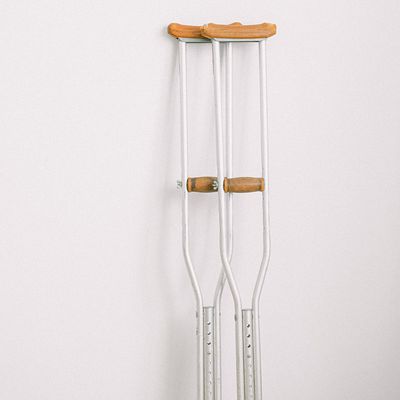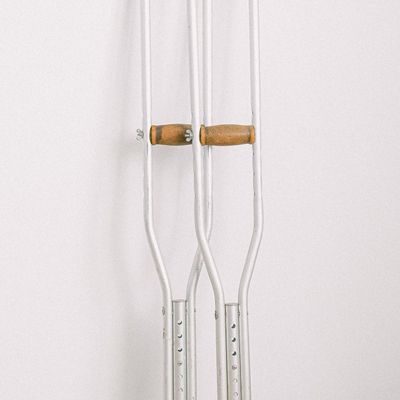

What You Need To Know Before Having A Hip Replacement
What are the benefits of having a hip replacement?
“Hip replacement is one of the most life changing and successful surgeries in modern medicine. Hip replacement is a surgical procedure performed to replace a damaged or worn-out hip joint with an artificial joint called a prosthesis. It is typically recommended for individuals who experience severe hip pain and limited mobility due to conditions such as osteoarthritis, rheumatoid arthritis or hip fractures. The main goal of hip replacement surgery is to relieve pain and improve mobility and function in individuals with hip joint damage. Hip replacement surgery is normally carried out under spinal anaesthesia with sedation. Sometimes you may have an epidural, which is like a spinal anaesthetic.” – Mr Hugh Apthorp, consultant orthopaedic and trauma surgeon at London Bridge Hospital
How do you know if you need a hip replacement?
“If you’re over the age of 50 and experiencing chronic hip pain or mobility limitations and have tried other more conservative treatments like medication, physiotherapy and lifestyle modifications, surgical intervention could be beneficial. At the same time, when hip pain hinders your ability to participate in activities you enjoy – such as exercising or other hobbies – it could be worth considering a hip replacement to regain an active lifestyle. Difficulty walking, climbing stairs or performing routine tasks due to hip pain and limited range of motion may also be a sign that a hip replacement could restore mobility. Disturbed sleep caused by hip pain can also negatively affect your overall wellbeing. If pain interferes with your ability to get a good night’s rest, a hip replacement may help alleviate discomfort, too.” – Professor Paul Lee, Harley Street orthopaedic and sports surgeon
What wears down the hip joint?
“Osteoarthritis is the most common cause of hip pain – it’s characterised by the breakdown of cartilage in the joint, leading to friction, inflammation and discomfort. Rheumatoid arthritis can also wear down the hip joint through inflammation, pain and stiffness. Meanwhile, a fall or injury can result in a hip fracture and may require a hip replacement to restore function and relieve pain. At the same time, other hip joint conditions – such as hip dysplasia and avascular necrosis – can also cause pain and require surgical intervention.” – Paul
What are your options?
“If you are over the age of 50, there are several options to consider, including a total hip replacement (THR), dual mobility ceramic-on-polyethylene and hip resurfacing. THR is the most common and widely performed hip replacement procedure. The ball component can be made of metal or ceramic, while the socket is made from ceramic or polyethylene. We don’t use metal on hips anymore – any decent surgeon won’t have done so for the last 15 years. THR provides excellent pain relief, restores joint function and allows for a wide range of activities. It’s a suitable option for women over 50 with arthritis, hip fractures or other hip conditions that haven’t responded to conservative treatments. Meanwhile, dual mobility hip replacements are designed to enhance stability and reduce the risk of dislocation. This type of prosthesis consists of an additional bearing surface within the socket component, allowing for greater range of motion before dislocation occurs. They are ideal for active patients. Hip resurfacing is a procedure where only the damaged surface is replaced. However, it’s not recommended for women over 50. One reason being that women have smaller bones and a different bone structure to men, which can make the procedure more challenging. Women also tend to have higher rates of osteoporosis and lower bone density, which can increase the risk of implant failure and complications.” – Paul
How to know which is right for you?
“It’s essential to have an open and honest discussion with your surgeon to determine the best course of treatment. First, the condition of your bones is an important consideration. A cement prosthesis may be preferred if your bone quality is compromised. At the same time, prostheses that offer durability and longevity may be more suitable for those who remain active. By understanding the benefits and potential risks associated with the different options, you can make an informed decision that aligns with your needs and maximise the potential for a successful outcome.” – Paul
Are there any potential risks?
“Like any surgery, hip replacement surgery comes with potential complications. While most people recover well after surgery, there are some risks you should be aware of. These include infection – which can occur in the wound or in the deeper tissues around the hip joint – and blood clots, which can form in the legs after surgery and travel to the lungs and cause serious problems. To prevent this, patients are often given blood thinning medications and encouraged to move around as soon as possible after surgery. There is also a risk of the hip joint dislocating after surgery, especially in the first few weeks. To minimise this risk, patients may be advised to follow certain precautions and movement restrictions during the early stages of recovery.” – Paul
What can you do to prepare for surgery?
“If you smoke, try to give up at least six months prior to surgery, as smoking can impair healing and increase the risk of complications. If you lead an active lifestyle, engage in regular strength training within your comfort level to build up resilience, aiming for high intensity with a low repetition. If you are overweight, consider losing weight. Excess weight can put additional stress on the hip joint and potentially impact the outcome of the surgery. However, don’t lose weight too rapidly just before your surgery, as this will lead to a sudden reduction in muscle mass instead of fat reduction. Prehabilitation can also help – these exercises focus on strengthening the muscles surrounding the hip joint, improving range of motion and enhancing overall physical fitness. Prehabilitation can help prepare your body for surgery and promote a smoother recovery.” – Paul
What role does rehabilitation play in the recovery process?
“Rehabilitation plays a vital role in the recovery process following hip replacement surgery for women. It is essential for regaining strength, mobility and functionality of the hip joint, enabling a return to everyday activities. The goal of rehabilitation is to facilitate healing, prevent complications, enhance range of motion and improve overall function. Physiotherapy is a cornerstone of hip replacement rehabilitation. A physiotherapist will create an individualised programme tailored to your needs and stage of recovery. Exercises tend to focus on improving flexibility, strength and balance. Gait training can also help women regain proper walking patterns and restore normal gait mechanics. This involves practising correct posture, weight-bearing and coordinated movements to improve balance and walking ability. Hydrotherapy can also be effective – also known as aquatic therapy, it involves performing exercises and movements in a pool under the supervision of a physiotherapist. The buoyancy of water reduces stress on the joints, making it an ideal environment for early rehabilitation and gentle strengthening exercises.” – Paul
How long does it take to recover fully?
“The typical timeline for full recovery and return to normal activities for women over 50 is around three to six months. However, this can vary significantly depending on your health, age and fitness level. Pre-existing conditions such as obesity, diabetes or cardiovascular issues may prolong recovery. Your level of pre-surgery fitness also factors into the equation. Generally, individuals who were physically active and in good shape prior to surgery may have an advantage in terms of muscle strength and overall fitness, potentially leading to a faster recovery.” – Paul
Are there any lifestyle modifications to be aware of to ensure the longevity of a hip replacement?
“Engaging in regular physical activity and maintaining a healthy weight is crucial for the long-term success of a hip replacement. However, the type, make and quality of hip replacement will make a big difference here. Low-impact exercises such as walking, swimming and cycling can help improve strength, flexibility and overall joint health without putting excessive stress on the hip. Maintaining a healthy and balanced diet can support overall joint health and promote healing. A diet rich in fruits, vegetables, lean proteins and whole grains provides essential nutrients for tissue repair and bone health. Adequate intake of calcium and vitamin D is particularly important for bone strength and can help prevent osteoporosis, while collagen supplementation can support healing and recovery.” – Paul
Here, Paul shares his dos and don’ts when considering a hip replacement
DO
Educate Yourself
“Gather information about hip replacement surgery, its benefits and the recovery process. Understand what to expect before, during and after the procedure to make an informed decision. Seek advice from a qualified orthopaedic surgeon who specialises in hip replacements. Ask questions, discuss your concerns and understand the surgeon's expertise and experience in performing the procedure.”
Get A Second Opinion
“If you have any doubts or concerns, consider seeking a second opinion from another reputable orthopaedic surgeon. This can provide you with additional perspectives and ensure that you are making the best decision for your health.”
Prepare Your Home
“Make necessary arrangements at home to ensure a comfortable and safe recovery. This may involve organising items within easy reach, installing grab bars or handrails and creating a clutter-free environment to prevent falls or accidents. At the same time, arrange for someone to assist you during the initial days following surgery – you may need help with daily activities, transportation and household tasks in the early recovery period.”
Participate In Rehab
“Engage actively in the rehabilitation and physiotherapy process as prescribed by your team. Follow the recommended exercises, attend therapy sessions and commit to the rehabilitation plan to promote healing, regain strength and improve mobility.”
Have Realistic Expectations
“While hip replacement surgery can significantly reduce pain and improve mobility, it is important to have realistic expectations. Understand that the surgery may not eliminate all discomfort or restore your joint to its pre-injury state. However, it can greatly enhance your quality of life and allow you to perform daily activities with less pain.”
Take A Long-Term Approach
“While modern hip implants are designed for durability, they are not indestructible. Understand that your artificial hip joint may wear out over time, particularly with excessive strain or activity. Post op follow-up appointments with your surgeon are essential to monitor the condition of your implant and address any concerns.”
DON'T
Rush Into It
“Take the time to thoroughly consider the benefits, risks and potential outcomes of hip replacement surgery. Rushing into a decision without proper evaluation and understanding may lead to dissatisfaction or unexpected complications.”
Neglect Your Health
“Prioritise your overall health before undergoing surgery. This includes maintaining a healthy weight, managing chronic conditions such as diabetes or hypertension and quitting smoking. Good overall health can contribute to a smoother surgery and recovery.”
Overdo It
“Follow your surgeon's instructions regarding activity restrictions and limitations. Avoid high-impact activities or movements that could strain the new hip joint. Pushing yourself too hard or too soon may lead to complications or compromise the success of the surgery.”
For more information or to book a consultation with one of the experts, visit ProfessorLee.uk and HCAHealthcare.co.uk
DISCLAIMER: Features published by SheerLuxe are not intended to treat, diagnose, cure or prevent any disease. Always seek the advice of your GP or another qualified healthcare provider for any questions you have regarding a medical condition, and before undertaking any diet, exercise or other health-related programme.
DISCLAIMER: We endeavour to always credit the correct original source of every image we use. If you think a credit may be incorrect, please contact us at info@sheerluxe.com.